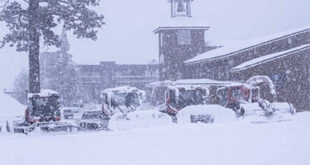NEW YORK: A growing number of farmers in Latin American nations renowned for their high-quality arabica coffee are starting to plant cheaper robusta — a crop still frowned upon or even outlawed in some countries.
In locales such as Colombia and Costa Rica, many in the industry have feared the low-brow bean will spoil their reputation as suppliers of the world’s best coffee.
Costa Rica bans robusta farming entirely, while coffee trade organizations in Colombia and elsewhere have historically discouraged it. But a growing number of Latin American farmers are warming up to the bitter bean as a cash crop.
“It has good productivity and a good price,” said Evelio Matamoros, a farmer in Nicaragua who first planted robusta in 2010. Robusta “has better yields and it doesn’t need shade. That matters.”
Robusta, which thrives at lower elevations, is typically processed into instant coffee or added to brewed blends as a cheaper ingredient. It’s also used to create the froth in some espressos.
Coffee producers from Colombia to Guatemala are dedicating more land to robusta, and it has even spread to Panama, a small country renowned for growing exceptionally high-quality arabica beans that fetch steep premiums.
Robusta sells at a discount of roughly 40 cents per lb to the benchmark arabica price, as the cheaper bean typically has lower input costs.
The efforts to increase — or in the case of Colombia, to begin — robusta production signals increasing acceptance of the bean.
In 2013, Colombian farmers — worried about the nation’s brand as the world’s biggest grower of premium arabica coffee — opposed President Juan Manuel Santos when he raised the idea of growing robusta in the country’s plains. But now some Colombian farmers are planting the lower-quality crop in lowlands that are unsuitable for arabica.
Diego Lopez, a fourth-generation coffee exporter who retired and now has a farm, has planted 12 hectares of robusta and aims to cash in on rising demand.
“We are talking about two different products, like bananas and plantains,” said Lopez, comparing robusta and arabica.
In Costa Rica, it has been illegal to grow robusta since 1988, and farmers who grow it could have their crops destroyed without compensation.
Farmers in Honduras — Central America’s biggest coffee grower — chose not to grow robusta to maintain tradition and quality, the country’s coffee association said.
ANACAFE President Ricardo Arenas said it aims to increase the country’s robusta harvest to 300,000 60-kg bags. This would be four times the 75,000 bags that the U.S. Department of Agriculture estimated were grown here in the 2016/17 season.
The expansion will require farmers to raise roughly $220 million for supplies and harvest machinery, and the financing is not yet in place, Arenas said. But in 2017, ANACAFE bought 20,000 robusta plantlets designed for high yields from Nestle SA, the maker of Nescafe, and the world’s biggest coffee maker. The first harvest from those trees is expected in 2019.
Sergio Morales, head of ANACAFE’s research department, said that roya made arabica farming unprofitable at altitudes below 800 meters, where some arabica is grown, making robusta the only solution for those producers.
In Nicaragua, the law entrusts the National Coffee Council to make sure “the quality of exports will not endanger Nicaragua’s coffee prestige,” and a protest by coffee growers in 2010 sought an outright ban. But in 2013, the government permitted limited areas for robusta farming — during a roya outbreak — and three years later expanded those areas.
Today, Nestle is working with Mercon Group in Nicaragua to develop production in its Autonomous Region of the South Atlantic, said Orlando Garcia, coffee regional manager of Zone AMS (America) for Nestle’s Corporate Agriculture Division.
Nicaragua harvested 25,000 bags of robusta last year, making up nearly 2 percent of its coffee production, according to USDA data.
Mercon, a longtime exporter of coffee from Nicaragua, expects the country’s robusta crop to increase to 38,000 bags this year and rise by more than six times to 238,000 bags by 2025, said Luis Alberto Chamorro, Mercon’s general director for Central America.
“The conditions and costs of the zone also allow us to produce robusta at very competitive prices versus other countries that produce this coffee,” Chamorro said.

 South Asian Gazette Worldwide News Work
South Asian Gazette Worldwide News Work



